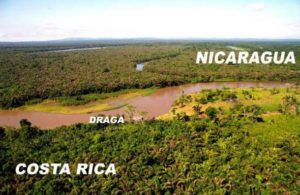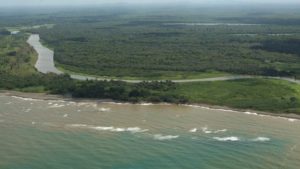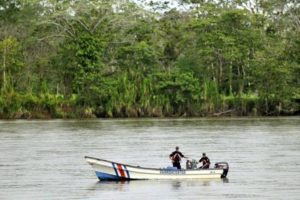
On Friday, February 2, the International Court of Justice (ICJ) announced three decisions taken regarding disputes between Costa Rica and Nicaragua in The Hague. The most important decision was the delimitation of the maritime boundary between Costa Rica and Nicaragua in the Caribbean and the Pacific. As for the border division, an effort was made to satisfy the two parties equally in order to define the territorial limits fairly.
The ICJ issued its verdict four years after the legal dispute began and finally the conflict was defined with an ecological tinge from Portillo Island, ordering Nicaragua to compensate Costa Rica with $ 378,890 for damages in a wetland on the Caribbean coast. The ruling of the ICJ was voted unanimously by the 16 judges, including the “ad hoc” judge appointed by Costa Rica, closing an extensive chapter of border disputes between the two countries, dating from the nineteenth century, to begin a new era of peaceful brotherhood.
On November 22, 2017, the Court ordered Nicaragua to suspend any type of work and withdraw from Isla Portillos, a small wetland of about 3 km that both countries claim as their own and was declared a Costa Rican territory. These measures were ordered at the request of Costa Rica, which since last September reported the presence of Nicaraguan personnel on the Island also called Harbor Head for Nicaraguans, despite the fact that the ICJ had ordered the area cleared since March 2011.

For the same date, Costa Rica was tasked to evaluate the environmental damages in the wetland of Isla Portillos caused by the felling of trees and the excavation of land to built three artificial pipes in the sector that occurred in 2010 and again in 2013. The purpose with which these dredging works were carried out was to unite the San Juan River with the Caribbean Sea. In the calculations made for the petition for compensation, it was estimated that the wetland area took more than 50 years to restore its natural balance as more than 300 trees were cut, among which there were species over 150 years old.
What are the wetlands?
Wetlands are areas where water is the main factor that controls the environment, as well as the associated vegetation and fauna. They exist where the water table is on or near the surface of the land or where the land is covered by water. They are defined as zones of transition between aquatic and terrestrial systems that constitute areas of temporary or permanent flooding, subject or not to the influence of tides, such as marshes, marshes and marshes, whose limits constitute the type of hydrophilic vegetation of permanent presence or seasonal, the areas where the soil is predominantly hydric; and the lacustrine areas or permanently wet soils by the natural discharge of aquifers.
On the other hand, the Ramsar Convention makes use of a broader definition since in addition to considering marshes, marshes, lakes, rivers, peatlands, oases, estuaries, and deltas, it also considers artificial sites such as reservoirs and salt flats and marine areas close to coasts whose depth at low tide does not exceed six meters, which may include mangroves and coral reefs.
Wetlands are one of the most productive environments in the world, being cradles of biological diversity and water sources and primary productivity of which innumerable plant and animal species depend for subsistence. Wetlands are of utmost importance for all the benefits they offer to humanity, from the supply of fresh water, food and building materials, and biodiversity, to flood control, groundwater recharge, and mitigation of climate change. However, studies show that the area and quality of wetlands continue to decline in most regions of the world.
What is going to happen with the Isla Portillos wetlands?

The decision of the international court of justice is a precedent for the environmental rights movements worldwide. From an international perspective, it is the first time in its history that the ICJ sets a compensation amount in environmental matters between two States, so this decision yields a multitude of reflection elements and analysis clues for future disputes between States in this particular matter.
To support its claim against Nicaraguan actions, Costa Rica created a methodology to quantify in a very precise way the environmental damage caused by Nicaragua in Isla Portillos before the judges of the ICJ.
Costa Ricans interested in the environment would like the same methodology could be applied equally to the destruction of wetlands of international importance, ecosystems, and forests that occurs in Costa Rica with great impunity many years ago. Many of the complaints end up being filed by the Environmental Administrative Court (TAA) in the absence of an assessment of environmental damage by the Costa Rican State: one of the arguments put forward is the absence of a methodology validated by the State to proceed with the valuation of the environmental damage.
But the most important thing now is to help the area of Portillos recover from the environmental impact it suffered and to seek the conservation and protection of these areas of enormous natural importance for the country and for the entire world.
